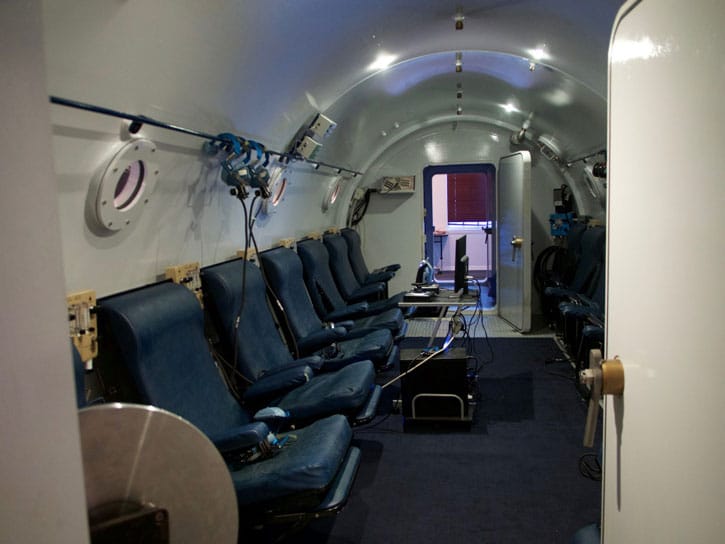What is Hypoxia, and What Causes It?
True or False: As a general aviation pilot who never flies above 10,000 feet, you don’t need to be concerned about the effects of hypoxia.
The answer is false of course! When most people hear the word hypoxia, they generally think about the lack of oxygen available at high altitude. But that’s not really what hypoxia is in its simplest form. And it’s an even greater concern when flying at night, one that you must face as low as 5,000 feet, not 10,000 feet.
Hypoxia is, in essence, the failure of the blood’s hemoglobin to transport oxygen, and this doesn’t just occur at altitude. Think of hemoglobin as a delivery truck, and it’s transporting oxygen deliveries through your veins.
There are four types of hypoxia, and they all produce the same general symptoms, though these symptoms vary from person to person.
- Can you name the different types?
- What are the symptoms of hypoxia?
The Different Types of Hypoxia
Hypoxic Hypoxia
Causes: High altitude
Hypoxic Hypoxia is what people normally think of for “hypoxia”. The air is less dense, and thus for a given volume of air you’re getting less and less oxygen molecules the higher you go. The hemoglobin delivery truck is making the rounds through your body just fine, but it’s practically empty and doesn’t have enough oxygen packages for everyone.
Histotoxic Hypoxia
Causes: Toxins in the blood, such as drugs & alcohol
Histo means tissue, and toxic – well, you know what that means. The hemoglobin truck still drives around your body with plenty of oxygen to deliver. But the blood cells are poisoned with toxins, and they’re so drunk that they either don’t accept the oxygen delivery or they just throw away the oxygen after delivery.
Hypemic Hypoxia
Causes: Mostly carbon monoxide
Hypemic hypoxia is a reduced ability of the hemoglobin to transport oxygen. Carbon monoxide poisoning is the most common cause for this type of hypoxia. Carbon monoxide can bond to hemoglobin over 200 times faster than oxygen molecules! So while the oxygen is patiently waiting to get loaded onto the hemoglobin delivery truck, a shipment of carbon monoxide forces its way on board and that’s all that gets delivered.
Stagnant Hypoxia
Causes: G-forces, constrictions, heart failure
This type of hypoxia is just as it sounds. The hemoglobin becomes stagnant – the hemoglobin delivery truck is either out of gas or encounters a roadblock. Even though it’s carrying adequate oxygen it can’t move it. This has also been known to happen in very cold weather when blood flow to the extremities is sacrificed in order to keep the core warm.

Symptoms of Hypoxia
It’s difficult to know exactly what your own symptoms will be unless you actually experience it in a controlled environment. If you ever have a chance to go into an altitude chamber, jump on it!
The altitude chamber simulate the air you breathe at various altitudes. You’re asked to do basic tasks at these altitudes, like play Patty Cake with a partner, put shaped blocks through appropriate holes, and organize a deck of cards. These tasks are a lot harder than they sound and it’s quite fun to watch people try to do them!
Now…imagine trying to fly an airplane when you think the square peg can fit in the round hole!
Knowing your symptoms will help you recognize hypoxia early. And you must recognize it early because the onset of symptoms is very slow, and often too late by the time the symptoms are full-blown. My own personal symptoms are lightheadedness at first, followed by a drunken silly feeling.
Some of the symptoms you may encounter include:
- Lightheadedness
- A feeling of being drunk
- Irritability
- Nausea
- Cyanosis – fingernails and lips turn blue
- Disorientation
- Tunnel vision or eventually blacking out
The More You Know
Do you know what the FAA rules are regarding the use of supplemental oxygen? Hint, it’s broken up into altitude cutoffs of 12,500 feet, 14,000 feet, and 15,000 feet.
Per FAR 91.211, supplemental oxygen is required for the crew at cabin altitudes between 12,500 feet to 14,000 feet if that portion is longer than 30 minutes. Above 14,000 feet, the crew must use supplemental oxygen at all times. Above 15,000 feet, all occupants must use supplemental oxygen.
So now that you’re an expert in hypoxia, again, what are the four types and their causes? Remember HHHS.
And what are some of the hypoxia symptoms?
As a pilot, the best thing you can do when you recognize the symptoms of hypoxia is get to a lower altitude and land as soon as possible – not your destination airport – but the closest airport even if it wasn’t your intended destination. If your aircraft is equipped with supplemental oxygen, use it. When was the last time you practiced donning the mask and activating it? Try it next time you go out to your aircraft during preflight.
Now go forth and safely conquer the skies!















Leave a Reply